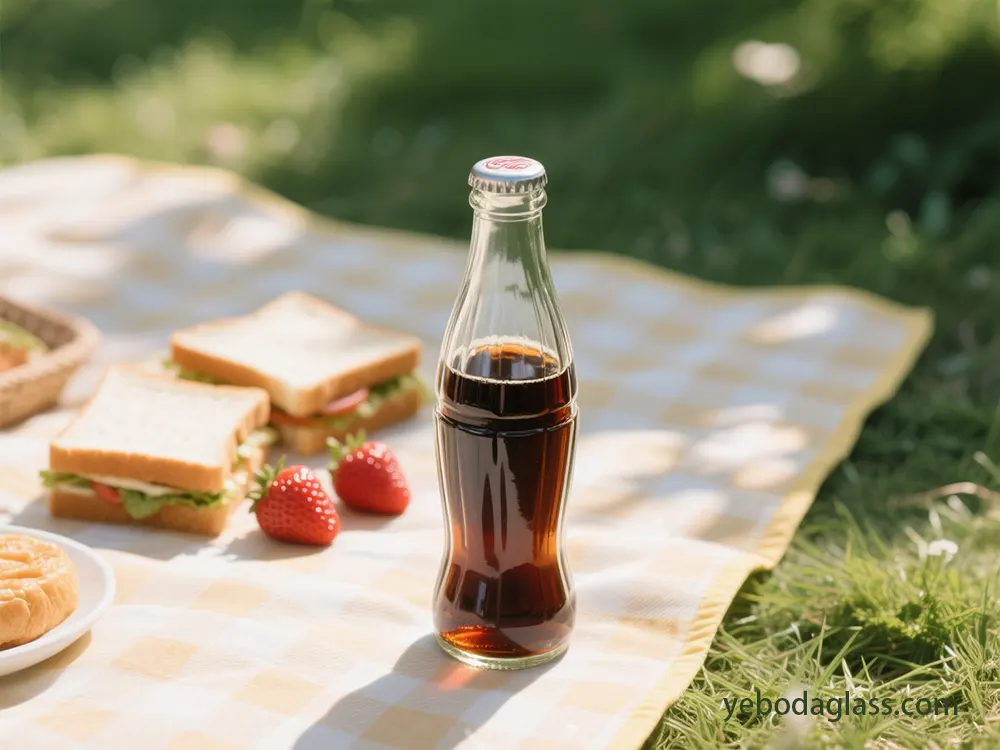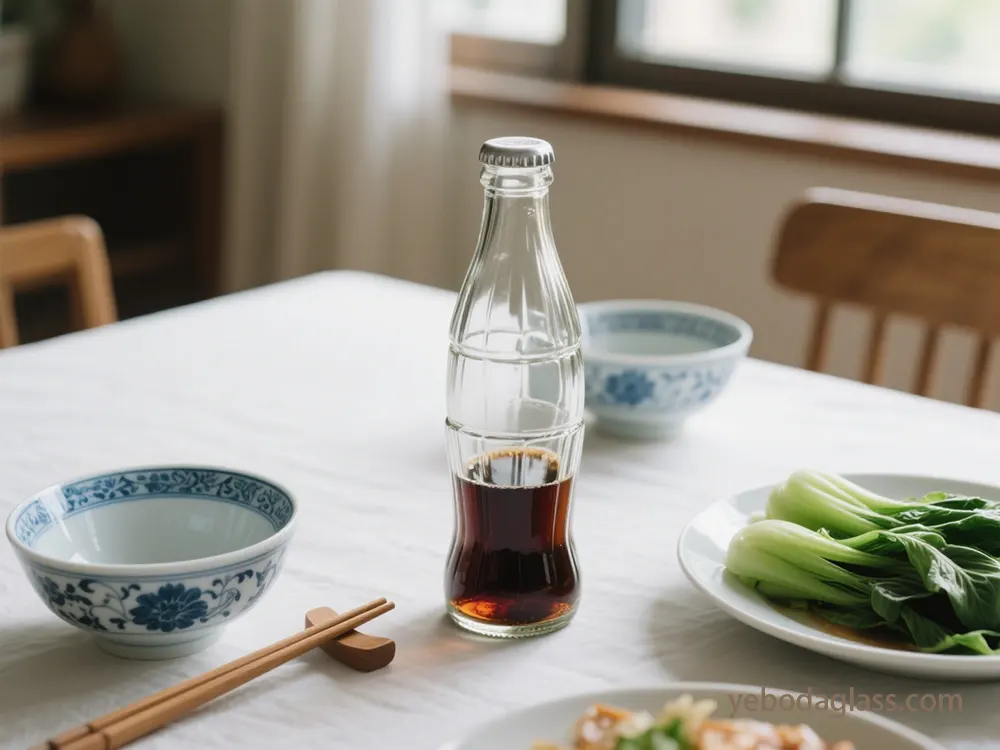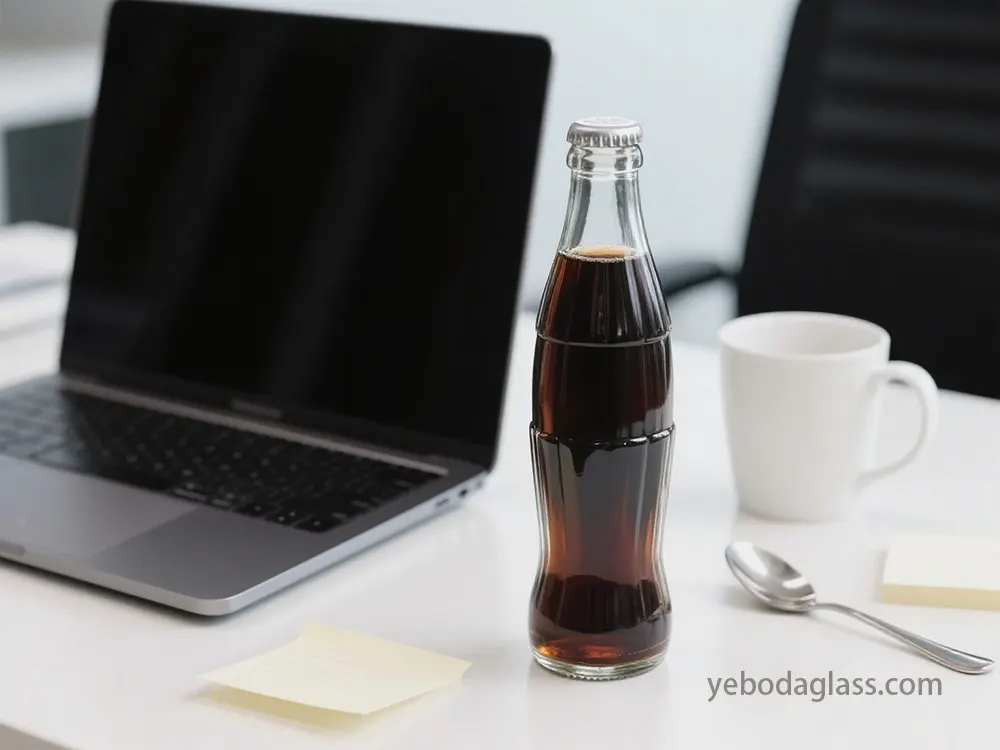PET’s lighter weight and durability allow more units per pallet, optimizing storage and transport space.This leads to better warehouse utilization compared to glass. PET bottles can also be stackable, further enhancing space optimization.
4.4. Production Costs and Material Composition
PET bottles generally have lower production costs due to more efficient manufacturing processes and typically less expensive raw materials. Glass manufacturing is energy-intensive, requiring high temperatures, contributing to higher production costs.
4.5. Damage Comparison Across Materials
PET generally offers advantages in reduced damage rates and overall logistical resilience compared to other materials like tinplate.
5. Brand Positioning and Consumer Perception
Packaging profoundly influences consumer perception and brand identity.
5.1. Premium Image and Taste Perception
Consumers associate glass with higher quality, fresher taste, and superior cold retention.Glass’s inertness preserves original taste and quality, vital for premium, organic, or “clean label” brands. Products in glass are often rated tastier.
5.2. Sustainability Perception and Brand Values

Glass is widely perceived as more sustainable due to recyclability and ocean-friendly nature.While infinitely recyclable, its recycling is more strength-in depth than PET.Consumers increasingly decide upon reusable and recyclable packaging.
5.3. Design, Aesthetics, and Differentiation
Glass gives particular layout attributes, improving premiumization, particularly for wine and spirits. Its clarity, weight, and tactile feel bring luxury.PET additionally offers excessive design flexibility, and plastic mimicking glass aesthetics is appealing.
5.4. Convenience and Practicality Trade-offs
Glass is frequently seen as much less convenient due to weight, breakage threat, and non-resealability. PET is greater sensible for mass-marketplace and on-the-pass consumption due to its lightweight and durability.
5.5. Demographic, Psychographic, and Regional Influences
Consumer possibilities range by using life-style (e.G., urban vs. Rural) and region, motivated by way of nearby conduct and policiesOlder generations may favor returnable glass.
5.6. Market Growth and Cost Considerations
The global glass packaging market is projected for significant growth.While consumers pay a premium for hygienic packaging like glass, the industry faces pressure to innovate with lighter, more cost-effective glass options to compete with PET and cans.
6. Sustainability Objectives and Regulatory Compliance
Sustainability and regulatory compliance are vital packaging issues.
6.1. Life Cycle Assessment (LCA) Comparisons
LCAs compare environmental impacts. Recent complete LCAs regularly desire PET, concluding PET plastic bottles are appreciably better for the environment than aluminum cans and glass bottles across several key metrics.
6.2. Environmental Advantages of PET
PET bottles typically produce fewer greenhouse fuel (GHG) emissions, generate much less strong waste, eat much less water, and result in fewer emissions contributing to acid rain and smog compared to glass and aluminum.Choosing PET over glass for soda for three hundred and sixty five days ought to avoid GHG emissions equivalent to putting off almost 53,000 garbage trucks of waste from landfills.
6.3. Impact of Glass Weight and Lightweighting
Glass bottle production is a major driver of life cycle impacts due to its weight.Glass bottles would need to be approximately 40% lighter to achieve comparable global warming impacts to PET.Lightweighting innovations can reduce glass’s carbon footprint.
6.4. Role of Recycled Content and Circularity
Recycled PET (R-PET) demonstrates excessive environmental sustainability, with advanced overall performance in international warming capacity and fossil gas shortage as compared to glass.PET bottles are 100% recyclable and may be made with one hundred% recycled content material. Glass is also infinitely recyclable, but its recycling is greater electricity-in depth.
6.5. Extended Producer Responsibility (EPR) Schemes
EPR schemes for packaging are expanding globally, driven by way of plastic pollution and circular financial system standards. They involve prices on producers, often modulated based on recyclability or recycled content material, incentivizing sustainable designs.
6.6. Deposit Return Systems (DRS) and Minimum Recycled Content
DRS, regularly related with EPR, increase collection costs through refunding deposits upon container go back. Many jurisdictions also mandate minimal recycled content material for beverage packaging, driving demand for recycled materials.
6.7. Regulatory Landscape and Harmonization Challenges
The EU’s Packaging and Packaging Waste Directive (PPWD) drives EPR in Europe, with ongoing revisions presenting stricter targets. National versions in EPR create complexity for manufacturers, main to divergent expenses and operational information.Similar developments are occurring in North America, with efforts to harmonize schemes globally.
6.8. Učešćenje Stakeholder-a i Ekonomski uticaj

Efikasni sistemi EPR zahtevaju široku saradnju stakeholder-a. Oni mogu stvarati poslove i刺激 иновације, ali могу povećati краткорочne troškove za proizvođače i potroшиče.
7. poređenjska analiza: Staklo vs. PET pakovanje
Ovaj deo pruža preporodnu evaluaciju stakla i PET.
7.1. Performanse materijala i zaštita proizvoda
Barijera za kisik:
Staklo nudi nadmoćnu, gotovo apsolutnu barijeru za kisik. PET je propusna, za osetljive proizvode zahteva napredne tehnologije za barijeru.
Retencija CO2:
Staklo pruža izvanrednu retenciju CO2. Barijera za CO2 kod PET-a je dobra, ali ne apsolutna, zahteva specijalizovane dizajne za dugoročnu retenciju.
Neaktivnost:
Staklo je hemijski neaktivno, čuvajući ukus i kvalitet. PET je generalno stabilan i odobren od FDA, ali staklo nudi apsolutnu neaktivnost za ekstremno osetljive formulacije.
Zaštita od svetlosti:
Prozvodno staklo i PET obezbeđuju ograničenu zaštitu od UV zračenja; zahtevano je tamno staklo ili PET sa blokiranjem UV.
Barijera za vodenu paru:
Staklo nudi značajno nadmoćniju barijeru za vodenu paru u poređenju sa PET-om.
7.2. Proizvodnja i troškovi proizvodnje
Sirov materijal & Proizvodnja:
PET generalno ima niža troškova proizvodnje zbog efikasne proizvodnje i manje skupa sirovog materijala. Proizvodnja stakla je energična, što dovodi do viših troškova.
Kapitanski troškovi linije za pakovanje u staklo (CapEx):
Linije PET-a tipično imaju niži početni investicija po kapacitetu jedinice.
Operativna efikasnost (OEE):
Brzina:
Linije PET-a su dizajnirane za visokopropusne operacije (24.000+ BPH). Linije stakla rade sporije (3.000-12.000 BPH) zbog nestabilnosti.
Puknutina:
Linije stakla imaju više stopa puknuća. Linije PET-a imaju značajno niže стопе.
Održavanje:
- Svi zahtevaju pažljivo održavanje. Vreme promene:
- Linije PET-a obezbeđuju veću fleksibilnost i brže vreme promene. Linije stakla mogu biti fleksibilne sa brzim alatima za promenu formata. Korišćenje prostora:
- Blokiranje PET mašina spašava prostor fabrike. 7.3. Troškovi logistike i distribucije
- Uticaj težine: Staklo je znatno težiše, što dovodi do većih troškova transporta (maksimalno pet путa više nego plastični).PET može spasti do 30% na transportu.
- Paletiranje & Magaciranje: Lakoća težine PET-a omogućava više ambalaža po paleti, optimizaciju skladištenja i transportnog prostora.
Oštećenje u prevozu:
- Lakoća stakla povećava operacione troškove i rizike.PET-ov otpor udarcima minimalizuje gubitke. 7.4. Alijanca brenda i percepcija potrošača
- Percepcija premium: Staklo je snažno povezano sa premium kvalitetom i elegancom.PET se percepi kao praktičniji za masovni tržište.
Percepcija ukusa:- Potrošači često ocenjuju proizvode u staklu kao ukusnije. Percepcija održivosti:
- Staklo se široko percepi kao održivije.PET je takođe 100% reciklabilan i može uključivati visok sadržaj recikliranih materijala. Konvenija:
- PET nudi iznadprosno konvenijenost zbog lakše težine i trajnosti.Staklo je manje konvenijeno. Fleksibilnost dizajna:
- Svi daju fleksibilnost; staklo prenosi tradicionalni premium, PET omogućava inovativne oblike i lakoću. 7.5. Srednji učinak na okruženje i pristup regulacijama
- Uticaji životnog ciklusa: Nedavne LCA studije sugerišu da PET ambalaža tipično ima manji srednji učinak na okruženje nego staklo tokom mnogih klasa, zajedno sa emisijama stakleničkih plinova i korišćenjem vode.
Sadržaj recikliranih materijala:
- PET ambalaža je 100% reciklabilna i može biti napravljena sa 100% recikliranim sadržajem (R-PET), značajno unapređujući njihov srednji učinak na okruženje.Staklo je beskrajno reciklabilno, ali njegova reciklacija je više energetske intenzivna. EPR i DRS:
- Svi predstavljaju izazov u povećanju sistema EPR i DRS globalno, podstičući održive dizajne. Kompleksnost regulacija:
- Varying EPR smernice između zemalja stvaraju izazove za proizvođače u pristupu pravilima. 8. Strateški preporuke
Optimalna pakovanje za vaš proizvod, YEBODA, zavisi od usklađivanja potreba proizvoda, tržišnih dinамиka, pozicioniranja brenda i ciljeva održivosti.
- 8.1. Recommendation for Premium, Highly Sensitive, or Niche Products If YEBODA is a premium, high-stop beverage wherein flavor purity, perceived fine, and logo background are paramount, or if it’s pretty sensitive to oxygen/requires absolute inertness, glass packaging is usually recommended.
- Rationale: Glass offers superior oxygen and CO2 barrier homes, making sure most product integrity and shelf lifestyles.Its inertness preserves original taste and exceptional, vital for a top class emblem.Consumer notion of glass as awesome and sustainable aligns with a premium identification.Higher logistics expenses can be offset by way of top class pricing. Consider lightweighting glass to mitigate affects.
- 8.2. Recommendation for Mass-Market, High-Volume, or On-the-Go Products If YEBODA objectives a broader mass marketplace, calls for excessive-extent production, emphasizes convenience, or is for on-the-cross intake, PET packaging is usually recommended.
- PET gives sizeable blessings in decrease manufacturing prices, reduced transportation charges (as much as 30% financial savings) due to light-weight nature, and advanced durability.PET strains are designed for high-velocity operations (24,000+ BPH) and provide extra layout flexibility and faster changeover instances, critical for high-extent production.While PET has higher oxygen transmission, advanced barrier technology can control this for sensitive beverages.Recent LCAs suggest PET commonly has a lower environmental footprint, especially with recycled content,aligning with sustainability dreams and EPR schemes. 8.3. Hybrid Approach or Phased Transition (Consideration)
- A hybrid approach should use glass for a top class line (e.G., hospitality) and PET for mass-marketplace or on-the-go formats. A phased transition from glass to PET may also be explored, requiring careful consumer perception control and clear communique of sustainability advantages. 8.4. Proactive Measures for Chosen Material

For Glass:
- Invest in lightweighting technology.Explore refillable structures in which feasible.Implement strong line protection to decrease breakage. For PET:
- Prioritize recycled PET (R-PET) to beautify sustainability and follow mandates.Invest in superior barrier technologies for most reliable product protection.Engage with Producer Responsibility Organizations (PROs) and adapt to evolving EPR/DRS policies. 9. Conclusion
- The decision among glass and PET for YEBODA is multifaceted. Glass excels in inertness, premium notion, and absolute barrier residences, best for excessive-cost, touchy, or background merchandise. PET gives compelling blessings in decrease production/logistics fees, higher production speeds, and a usually greater favorable environmental profile, specially with recycled content material and advanced barrier technology. The strategic recommendation hinges on number one commercial enterprise targets: prioritizing premium positioning and flavor integrity may also desire glass, while optimizing for fee-efficiency, high-extent distribution, and environmental narrative can also choose PET. A nuanced method, potentially a hybrid approach or phased transition, should leverage each substances’ strengths. Continuous monitoring of marketplace developments, patron possibilities, and regulatory developments might be important for YEBODA’s aggressive facet and sustainable growth.
- Latest Blogs Read More »
Glass Bottle Company Innovations Driving the Future of Premium Packaging
Sustainable Custom Glass bottles: Aligning Your Brand with Eco Trends
Glass Food Storage Containers: Smart Choice for Health
Contact Us
- Comment breadcrumbs
Open table of contents
Close table of contents
- Comment PET daje značajne blagodetjelja u smanjenju troškova proizvodnje, smanjenju transportnih troškova (do 30% finansijerskih ušteda) zbog lakih svojstava, i napredne trajnosti.PET veza su dizajnirane za brze operacije (24.000+ BPH) i pružaju dodatnu fleksibilnost dizajna i brže vreme prebacivanja, ključno za visokopropusne proizvodnje.Kako PET ima viši prijenos kisika, napredna tehnologija za zadržavanje može kontrolisati ovo za osjetljive pića.Izdvojene analize životnog ciklusa (LCAs) sugerišu da PET često ima niži okolišni trag, posebno sa recikliranim sadržajem, usklađujući se sa ambicijama o održivosti i planovima EPR.
8.3. Hibridni pristup ili Faza prenos (Razmišljanje)
Hibridni pristup treba da koristi staklo za vrhunski nivo (npr. u turizmu) i PET za masovne tržište ili beogradne formate. Možno je istražiti fazu prenos od stakla na PET, što zahteva pažljivo upravljanje osećajima potrošača i jasnu komunikaciju o prednostima održivosti.
8.4. Proaktivne mere za izabranu materiju
- Za Staklo: Investirajte u tehnologiju lakih veza.Istražite reciklirajuće strukture kada je to dozvoljeno.Izvedite jaču zaštitu linije kako biste smanjili presecanje.
- Za PET: Prioritetizujte reciklirano PET (R-PET) kako biste poboljšali održivost i pridržavali se propisa.Investirajte u napredne tehnologije za zadržavanje za najverodostojniju zaštitu proizvoda.Učešćujte se sa Organizacijama odgovornosti proizvođača (PRO) i prilagodite se različitim politikama EPR/DRS.
9. Završetak
Odluka između stakla i PET za YEBODA je kompleksna.Staklo se ističe u inertnosti, vrhunskom konceptu i apsolutnim svojstvima za zadržavanje, najbolje za visoko cijenjene, osjetljive ili povijesne proizvode.PET pruža usamljive blagodetjelje u smanjenju troškova proizvodnje/logistike, većim brzinama proizvodnje i generalno prijateljskom okolišnom profilu, posebno sa recikliranim sadržajem i naprednim tehnologijama za zadržavanje.
Strateški savjeti se temelje na primarnim poslovnim ciljevima: prioritetiranje premium pozicioniranja i integriteta okusa možda zahtijeva staklo, dok optimizacija za cijenovnu učinkovitost, veliki raspon distribucije i okolišna priča mogu birati PET.Nužna je složena strategija, potencijalno hibridni pristup ili faza prenos, koja bi koristila snage oba materije.Kontinuirano praćenje tržišnih trendova, potrošačkih želja i regulacionih promjena biti će ključno za konkurentnost YEBODA i održivi razvoj.

